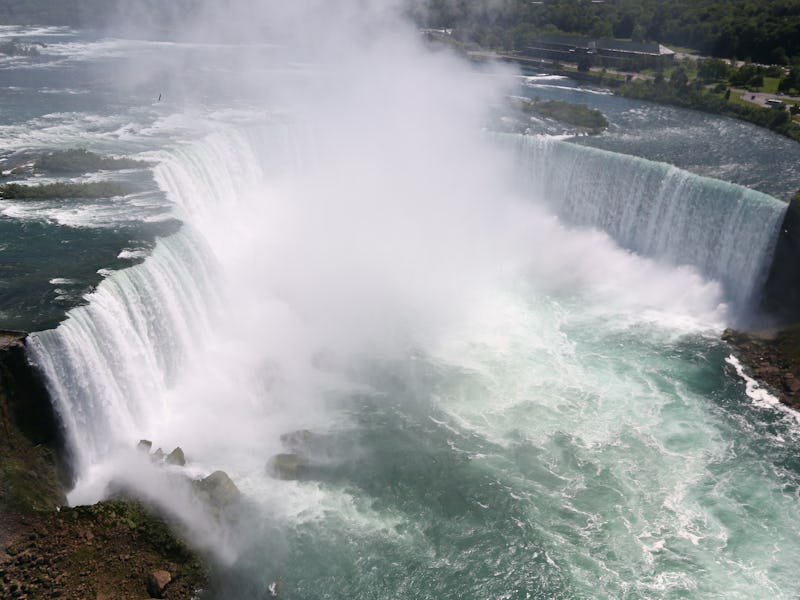Niagra Falls: How and Why We May Have to Shut It Off
It's just for a little while.

Authorities are discussing plans to shut the tap on the American side of Niagara Falls to allow for repairs to two 115-year-old pedestrian bridges. And, no, they are not planning to freeze it.
For the first time since 1969, when scientists wanted to investigate the torrent’s rate of erosion, the nation-spanning tundra may once again have to briefly relinquish its claim to having the largest flow rate of any waterfall in the world, because we humans need to mess with it.
The proposal calls for the construction of a temporary structure — or cofferdam — to divert water from the American side of the falls to the Canadian, boosting Horseshoe Falls, while turning American Falls and the Bridal Veil Falls into a trickle. Under normal circumstances, Horseshoe Falls — which makes up 85 percent of the power of Niagara Falls — is the tallest waterfall in North America and has the highest flow rate in North or South America. Public hearings on the plan will begin this week.
The temporary halt on water flowing down the American side of Niagara Falls may seem like it would pose a challenge to the area’s significant tourism industry. But if the 1969 closure is any indication, the slower stream of water may bring a flood of tourists curious to see the famous landmark without its iconic surf.
Not only will crowds swell, but they may have some interesting — and frightening — spectacles to observe. The last time the waterfall fell quiet, investigators found the remains of two human bodies. They also recovered millions of coins that well-wishers had tossed in over the years, causing a potential security challenge as people began to dive in to recover them.
Diverting so much water is an altogether laborious and challenging prospect, but park administrators are warning that the bridges that allow people to travel to Goat Island, a small mass of land that divides the American and Canadian sides of the Falls, are beginning to pose a threat themselves. The aesthetically unappealing links were actually installed ten years ago to temporarily replace the original bridges, which had deteriorated significantly.
It’s telling that Americans and Canadians love Niagara Falls enough to shut it off, just so we can keep getting close to it. And who knows? We might even find something interesting.